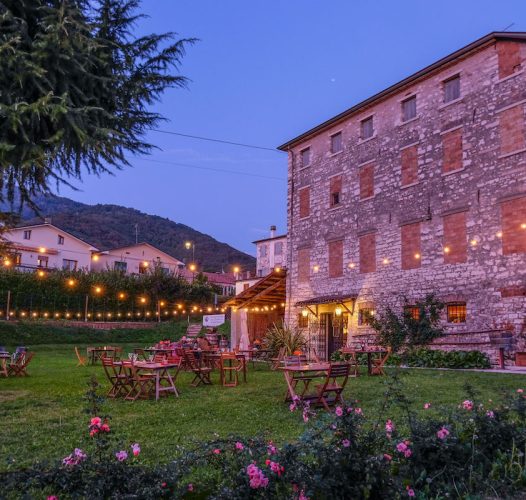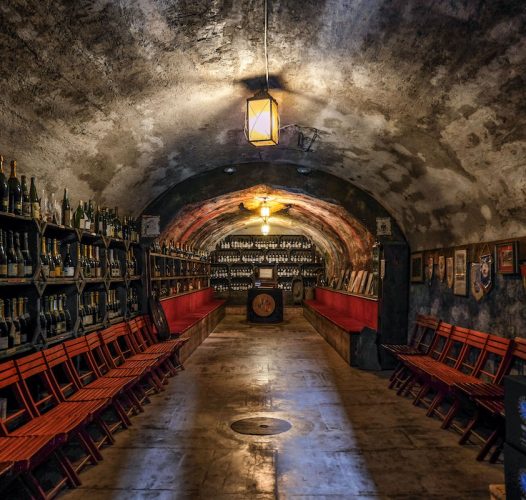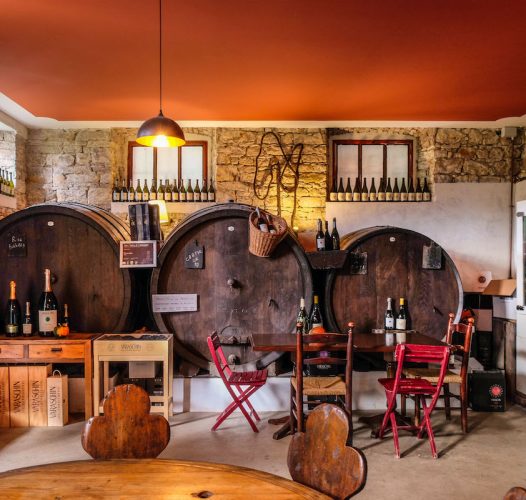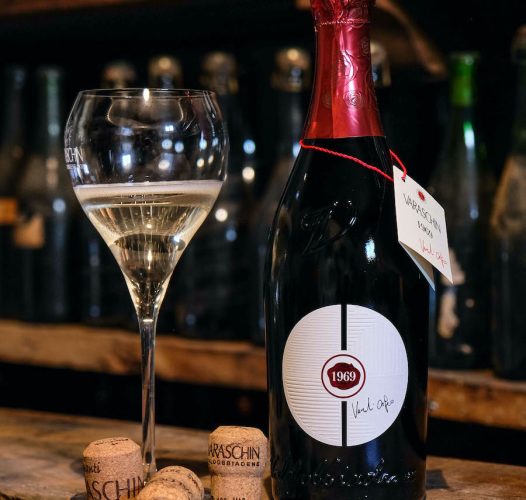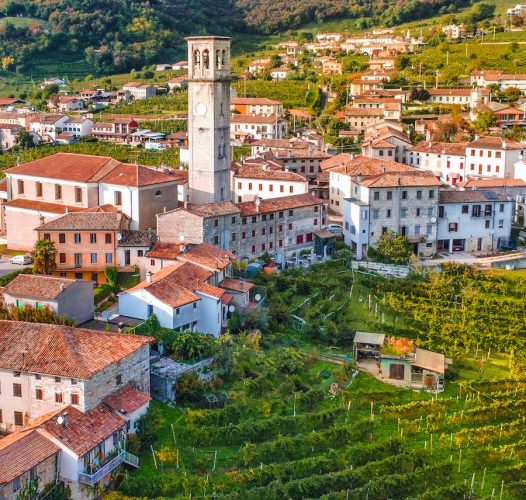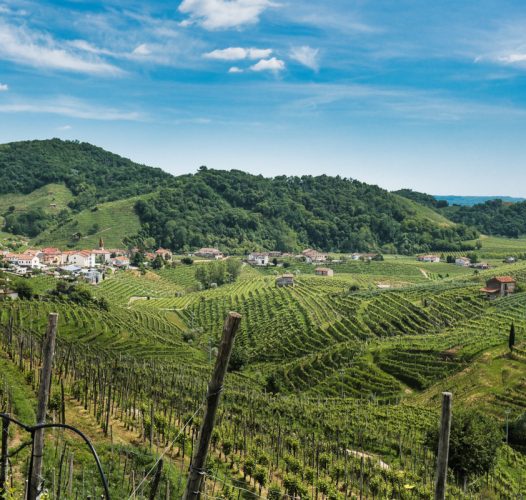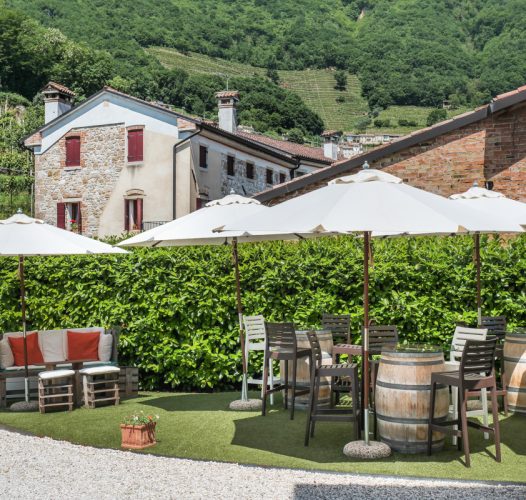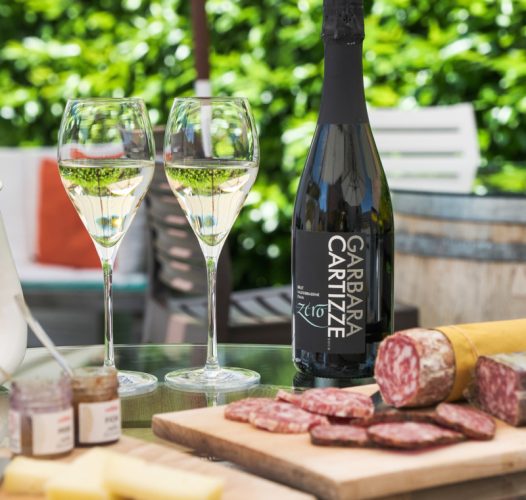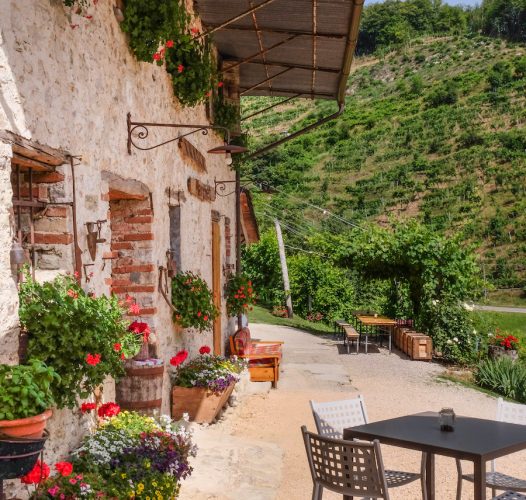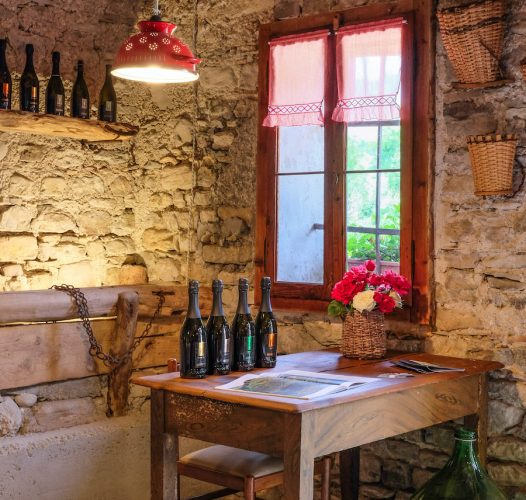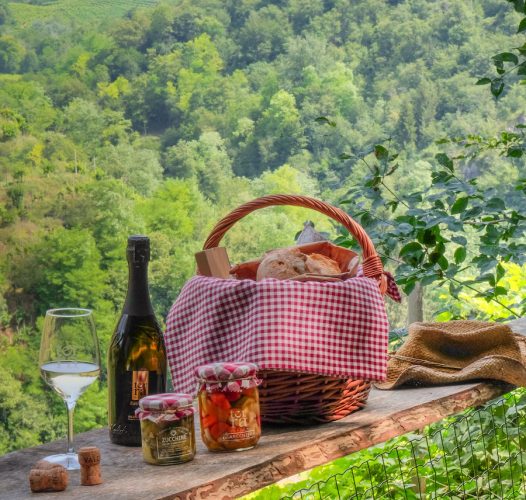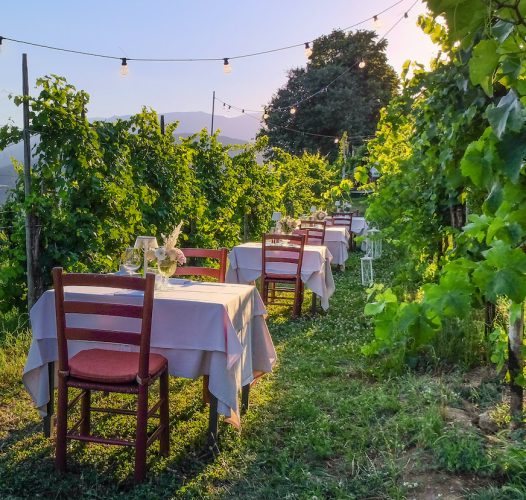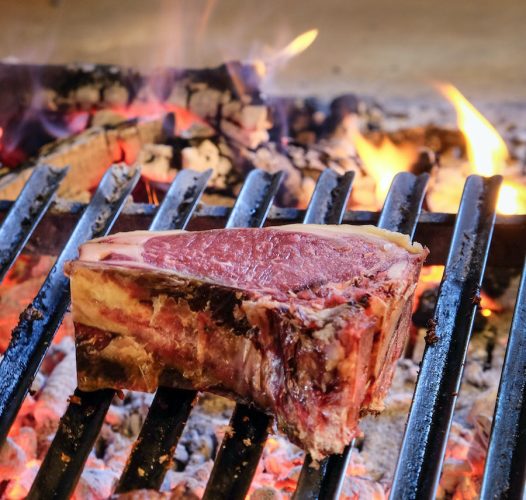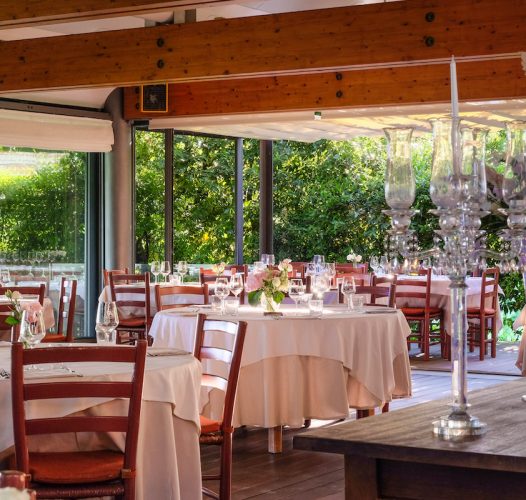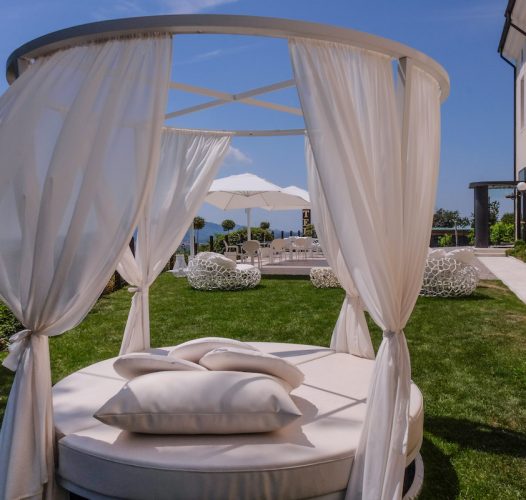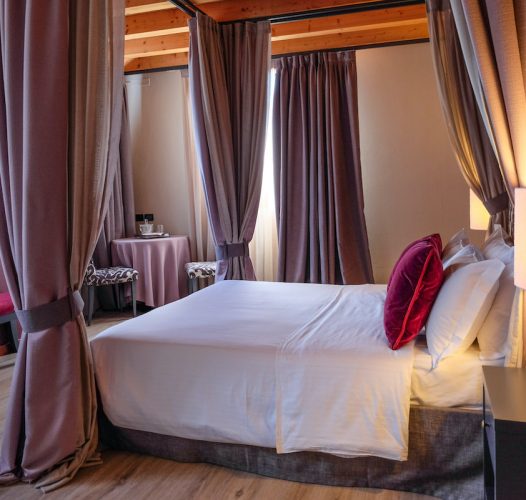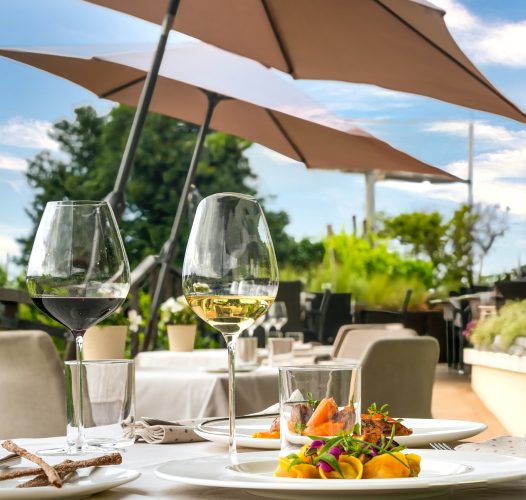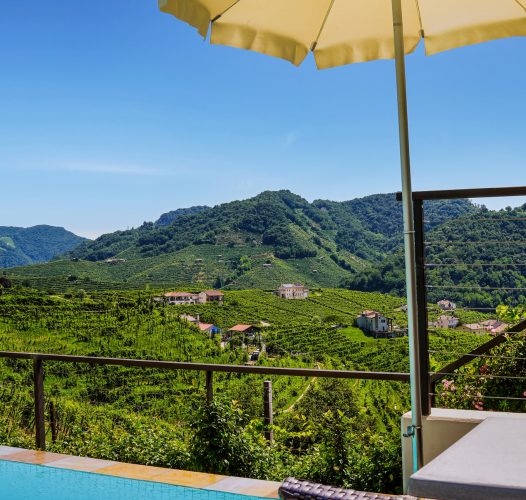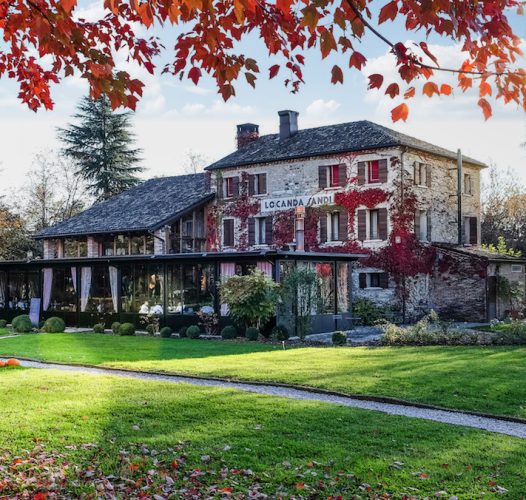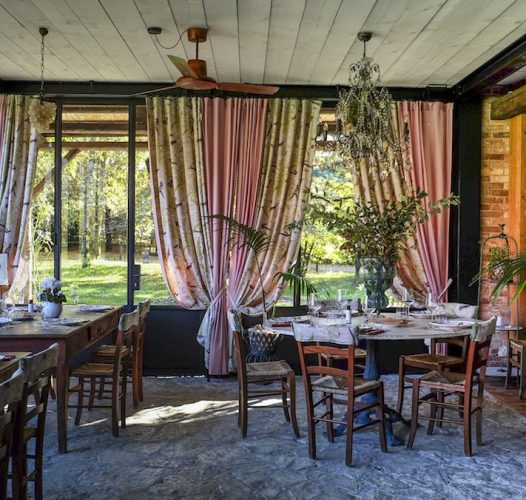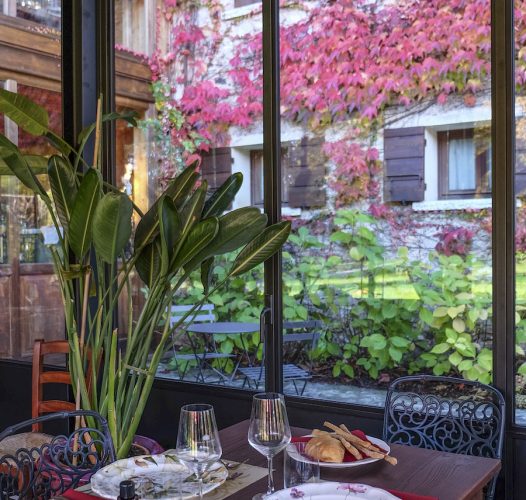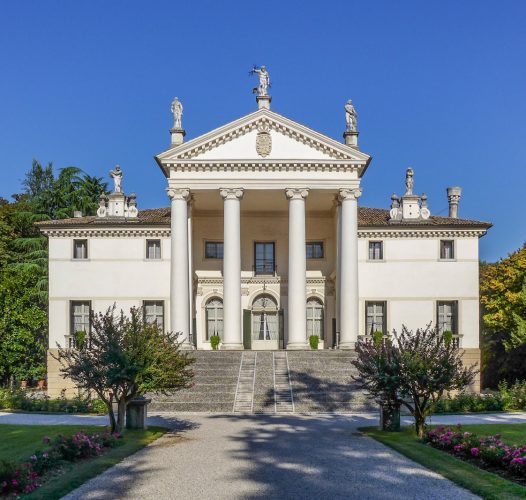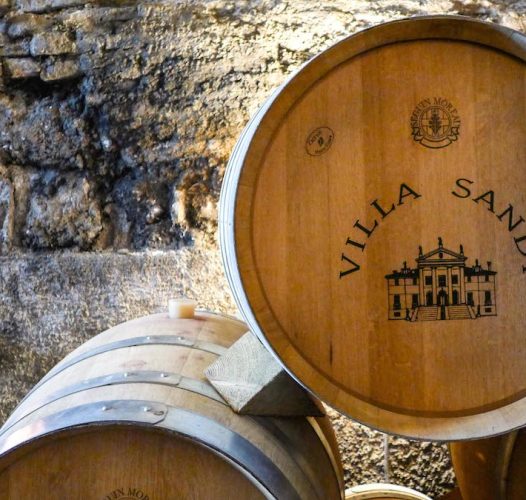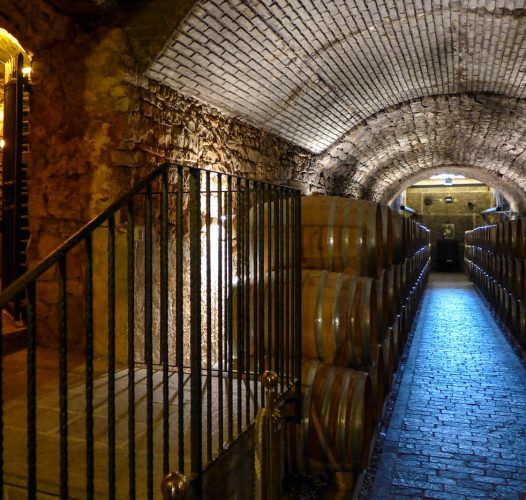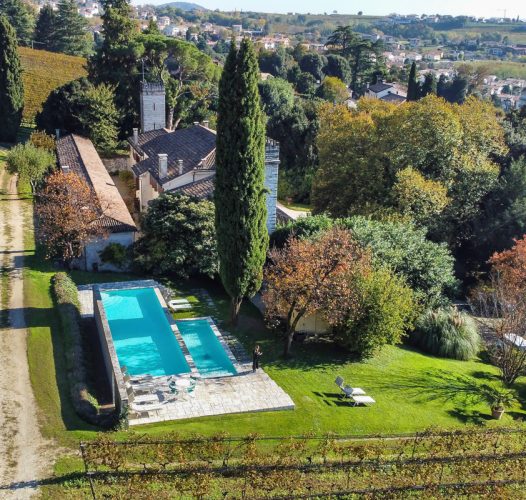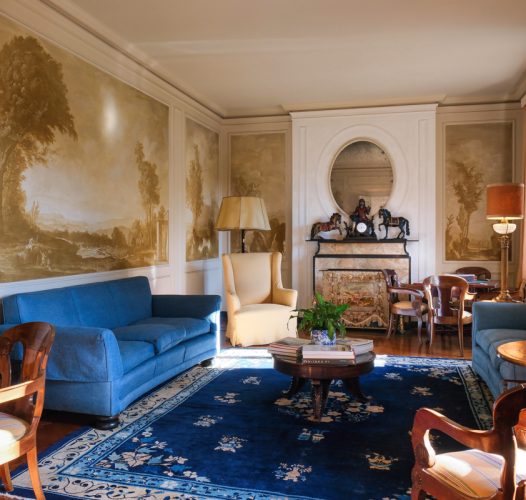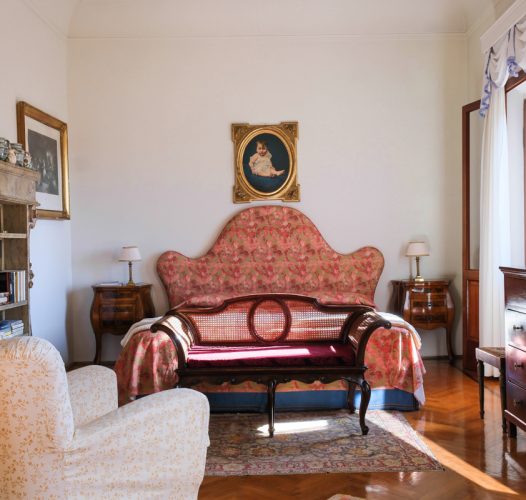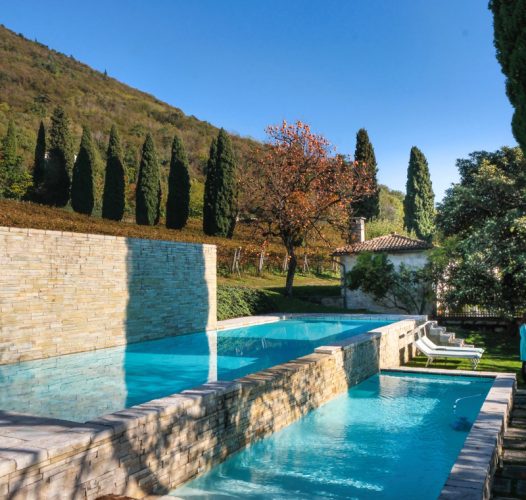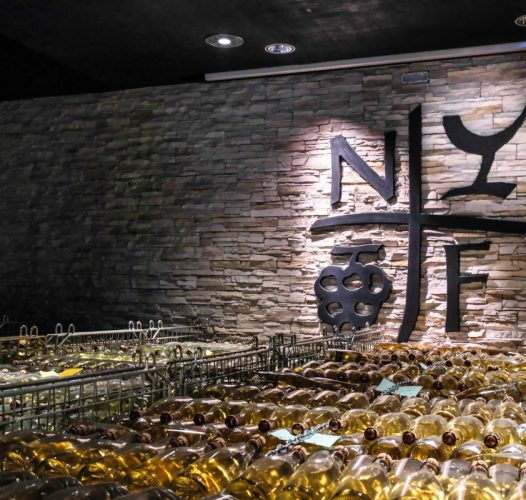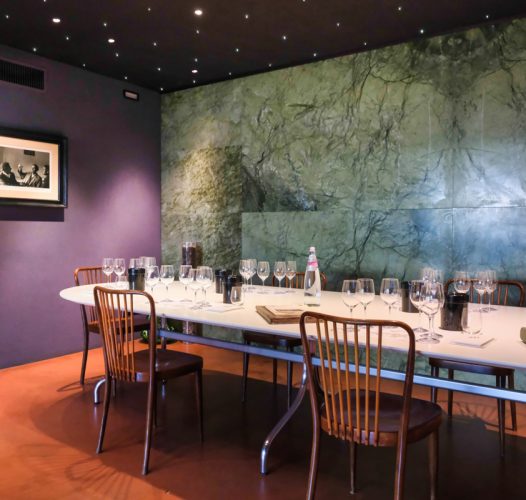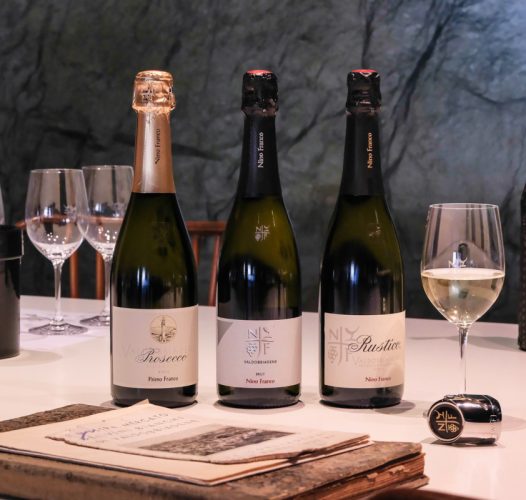An itinerary in the Prosecco Hills
Amongst wineries with a view, ancient villas, and gourmet trattorias
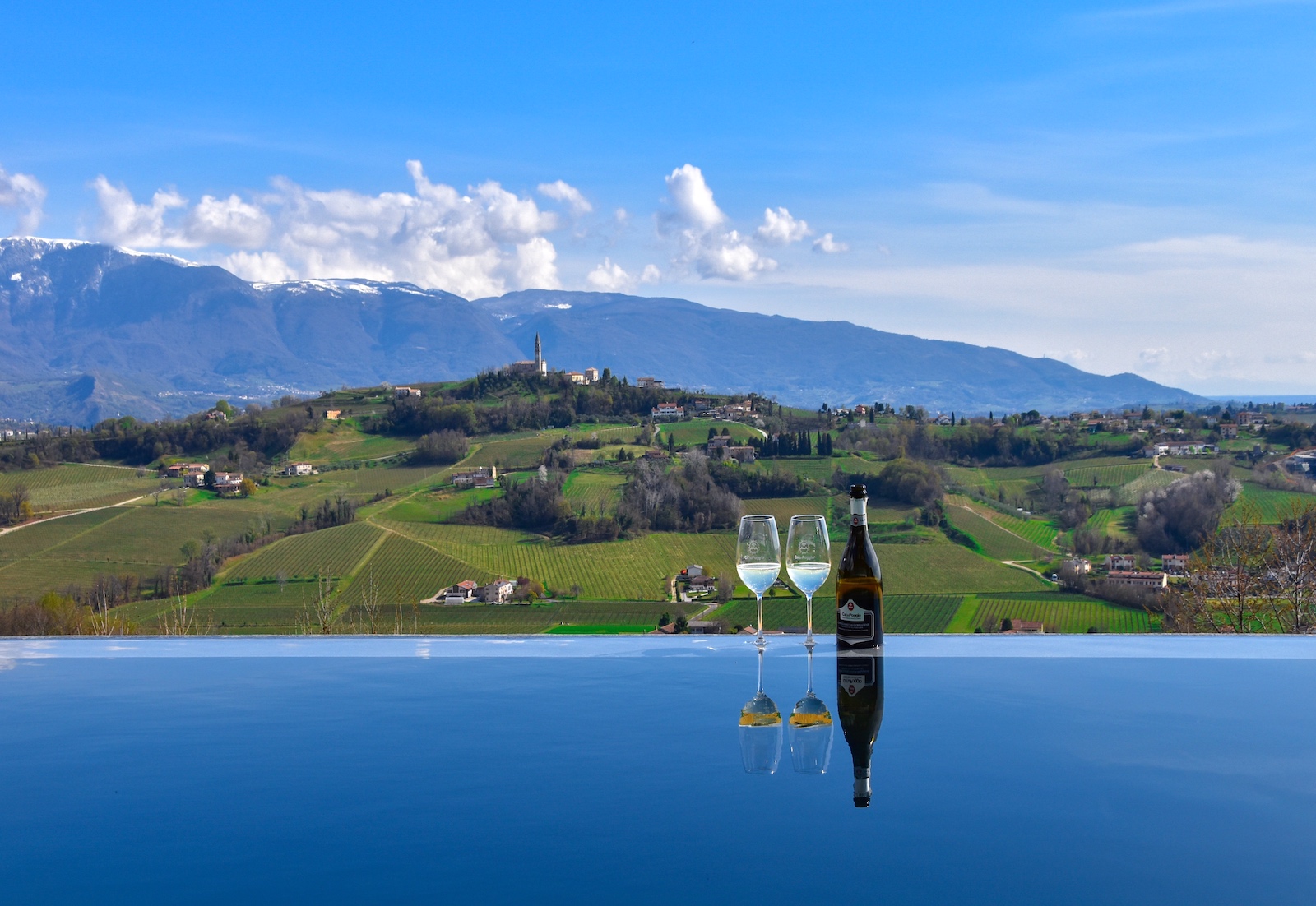
An itinerary, among wineries with a view, charming villas, and gourmet trattorias, through the Prosecco Hills, which became a UNESCO World Heritage Site in 2019 for the exceptional value of this unique landscape, famous for its characteristic vineyards cultivated on terraces nestled on the steep hills.
Traveling along the SP36, the long panoramic road that winds for kilometers amid breathtaking views towards Valdobbiadene, you reach the Santo Stefano area, the beating heart of the Cartizze hills, the Prosecco “grand cru” and the pinnacle of quality for the Conegliano Valdobbiadene Prosecco DOCG wine denomination.
Here, you can’t help but begin your journey by visiting the most secret address in the Prosecco Hills: the Cella Vinaria of the Confraternita del Prosecco. Its history began in the second half of the 19th century, when the Brunoro family started producing bottle-fermented Prosecco at home, right in the center of San Pietro di Barbozza.
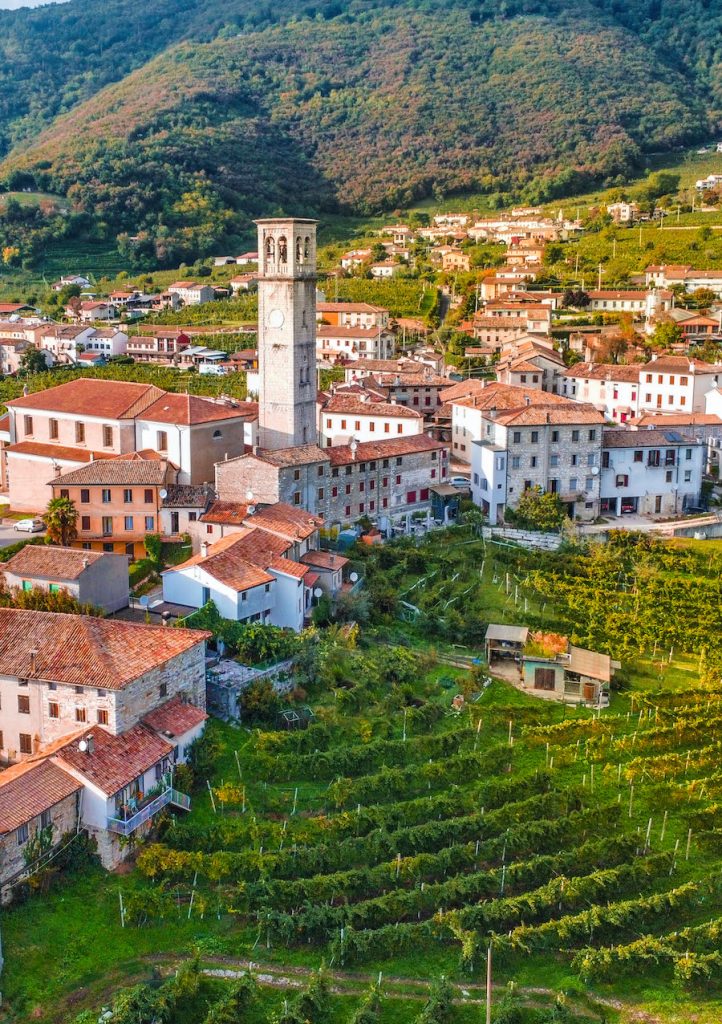
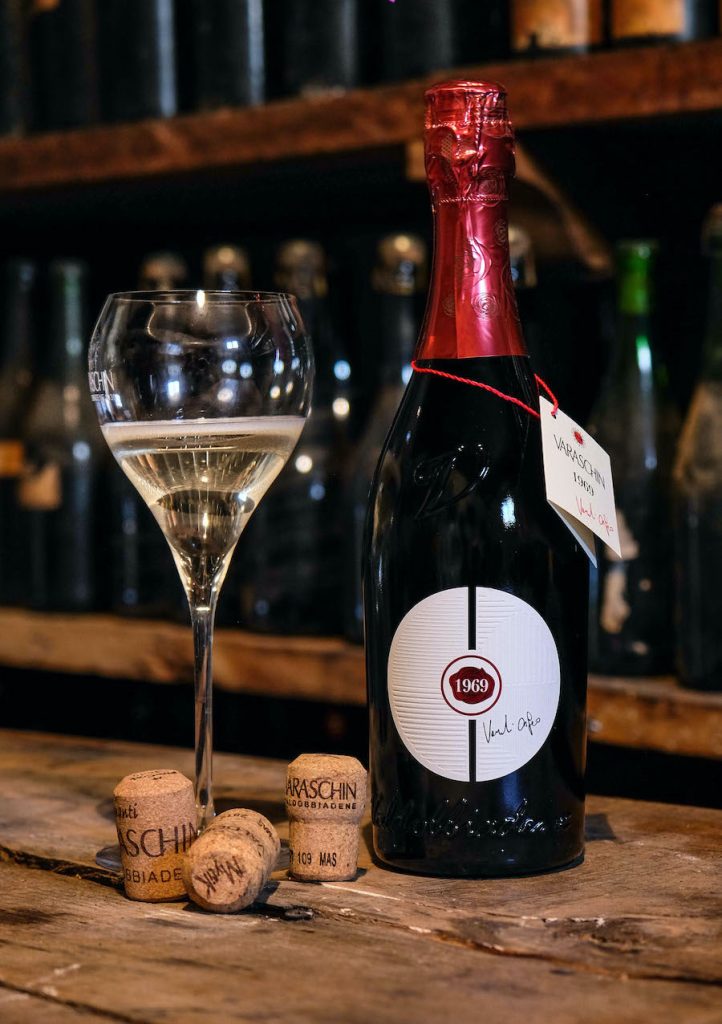
The Prosecco hills are the ideal place if you want to experience all-embracing beauty: get into the heart of nature, tasting traditional products.
Around 1930, Isidoro Brunoro, a passionate winemaker, created the area’s first professional winery next door together with Giuliano Bortolomiol, Umberto Bortolotti, and Mario Geronazzo. Here, in 1946, the Confraternita del Prosecco di Valdobbiadene was founded with the noble goal of helping the region recover after the Second World War by protecting and promoting its flagship product, Prosecco wine.
As the Confraternity’s headquarters, they chose the vaulted aging cave, dating back to 1931, part of the Brunoro family’s cellar. Today, it’s located inside the tasting room of Casa Brunoro, part of the Varaschin Winery, a winery born from the union of two families thanks to the love blossomed between Emma Brunoro and Matteo Varaschin.
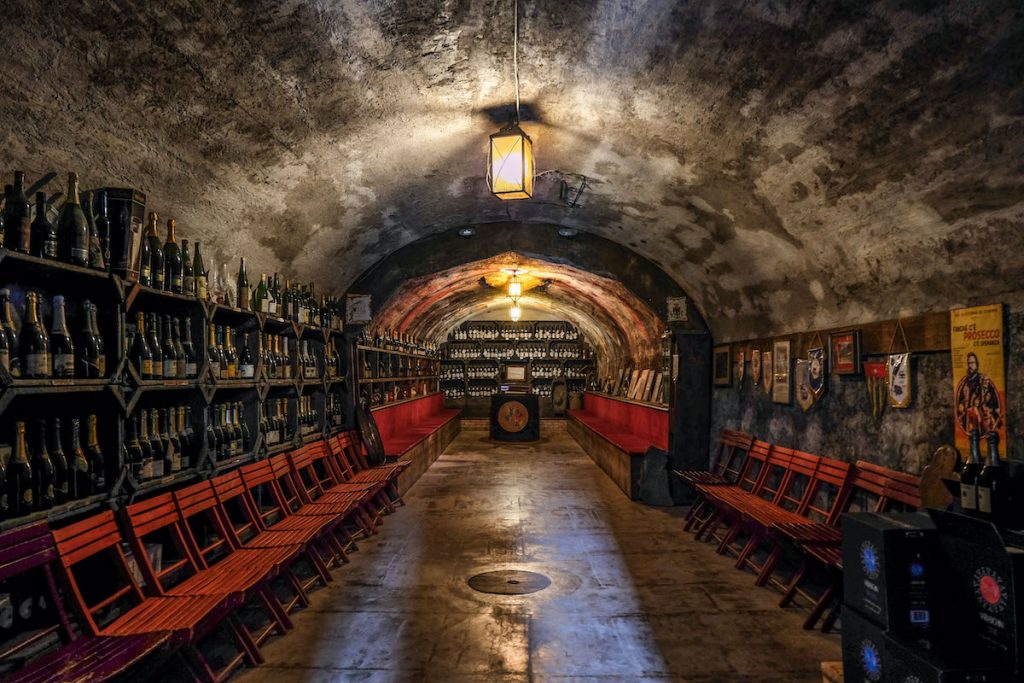
The Cella Vinaria is open to visitors, and the Varaschin family takes guests on a magical tour to discover the Confraternity’s secrets. Casa Brunoro, located right in the center of San Pietro di Barbozza, is perfect for a snack or an aperitif.
Also in Valdobbiadene, the garden of Cantina Garbara can be booked for tasting some of the finest Superiore di Cartizze and Prosecco DOCG wines. With its “heroic” approach, i.e., entirely by hand on the steep hills, Garbara was the first winery in the area to experiment with the Cartizze Superiore Metodo Classico (when Prosecco is traditionally produced using the Charmat method).
The Garbara vineyards are located 330 meters above sea level, and the roots of their vines extend deep into the soil, allowing them to draw on the richest soil, giving the wine its unique characteristics. This explains why Garbara’s motto is “as in life, even for the vine, you have to reach certain depths to reach certain heights.“
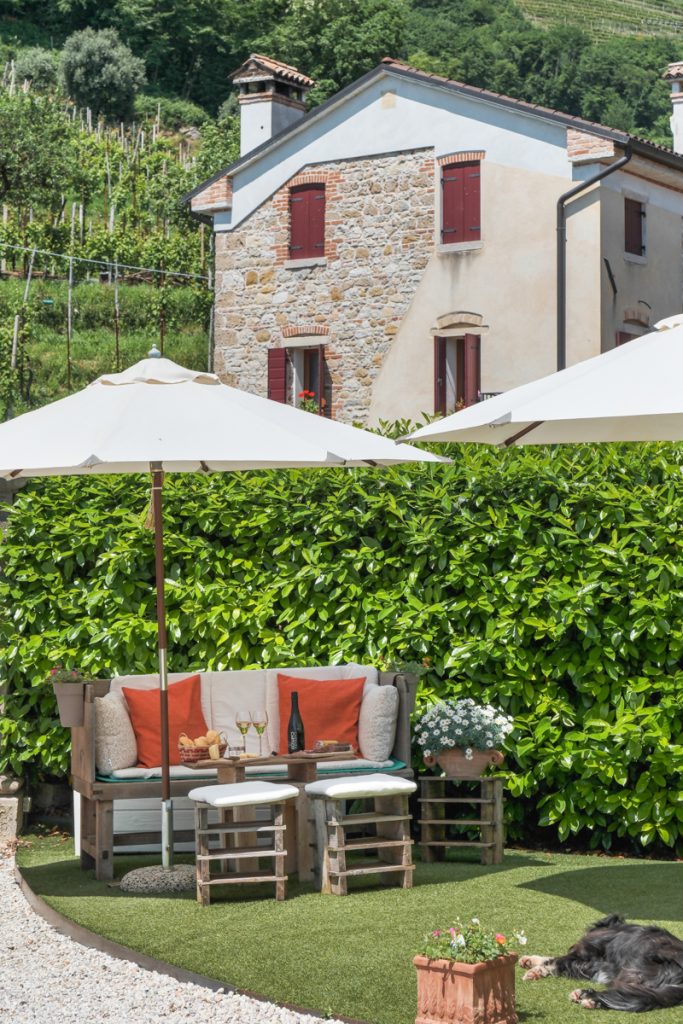
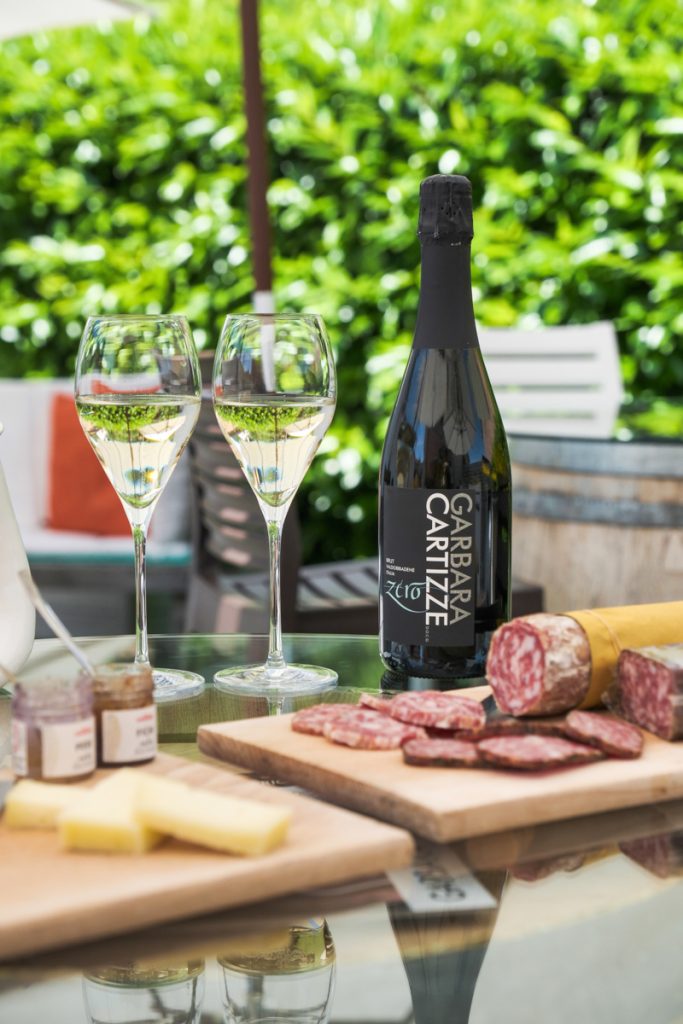
The Valdobbiadene area is also synonymous with breathtaking views of the famous hills that have earned UNESCO recognition. Such the panorama that can be enjoyed in Guia from Frasca Marchet, a small stone farmhouse, named after the traditional wine shops once built to provide refreshment under the vines, perched against the steep banks where the grapes are cultivated.
Managed by the De Stefani family, it offers the thrill of experiencing the rural life of times gone by, where you can taste exclusively “family” products, such as Prosecco DOCG in seven varieties and delicious cured meats produced according to tradition, as well as mountain cheeses and local specialties (that can also be tasted in special picnic baskets).
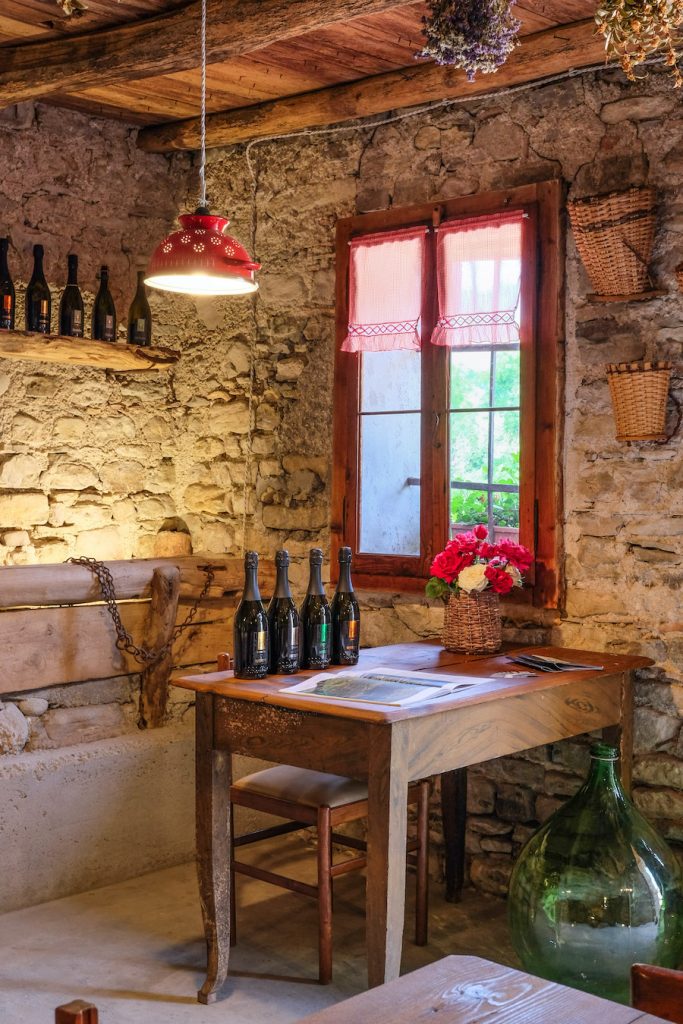
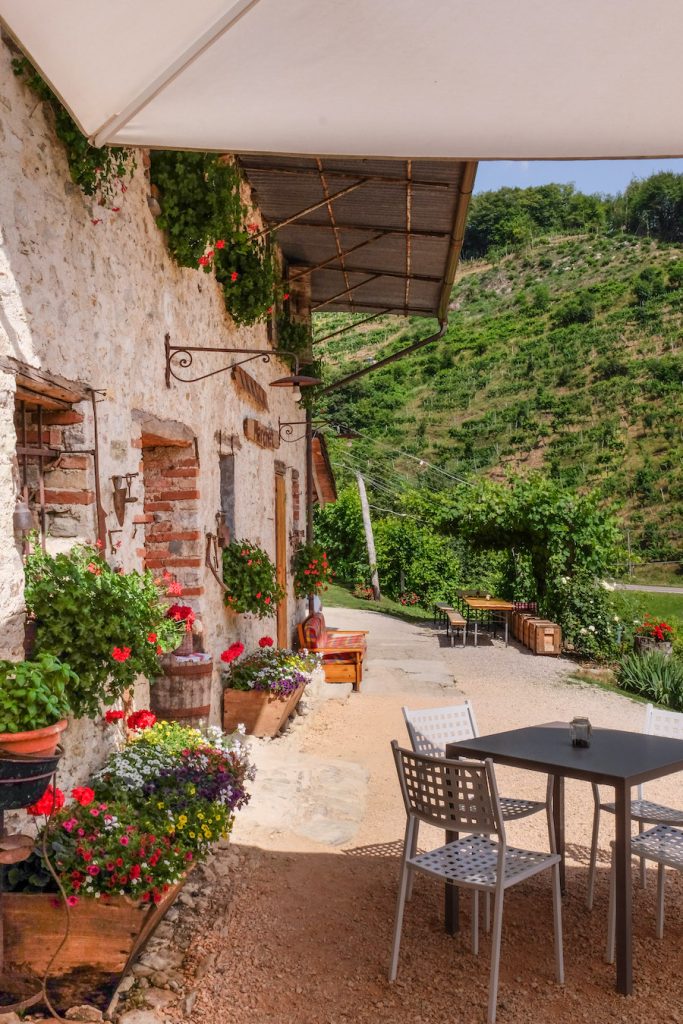
Another characteristic experience of the Prosecco Hills that’s well worth trying is grilling or spit-roasting, traditional cooking methods in the area, particularly for preparing farmyard meats.
An unmissable destination is the historic Trattoria alla Cima, located just minutes from the center of Valdobbiadene. It has become famous not only for its expertly cooked meats but also for its Dinner among the Vineyards, served in the summer among picturesque rows of vines surrounded by flowers and lanterns.
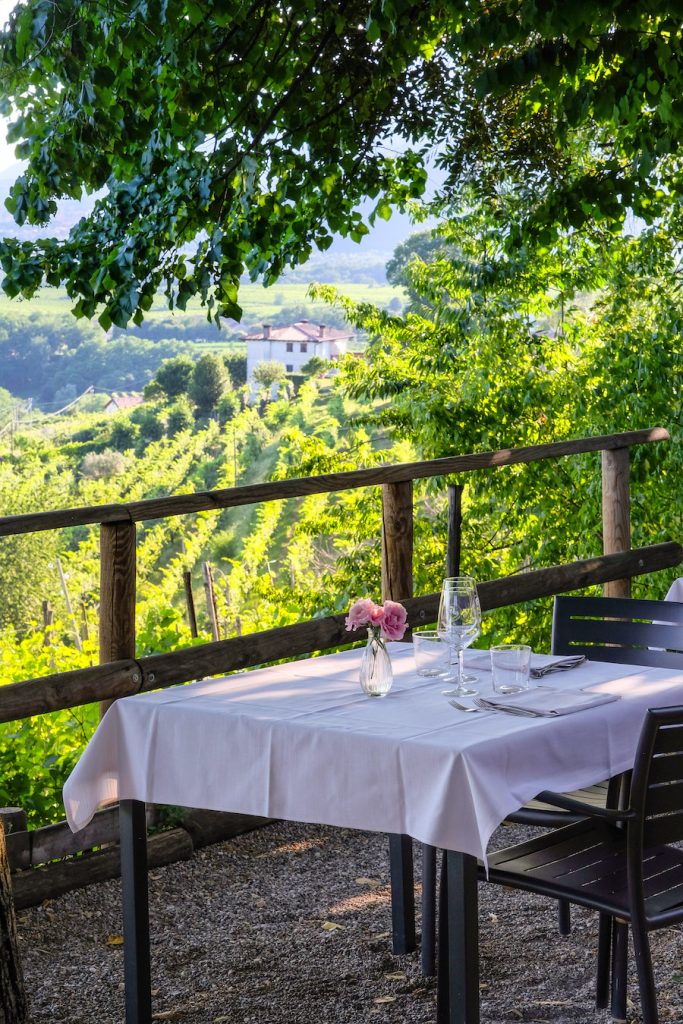
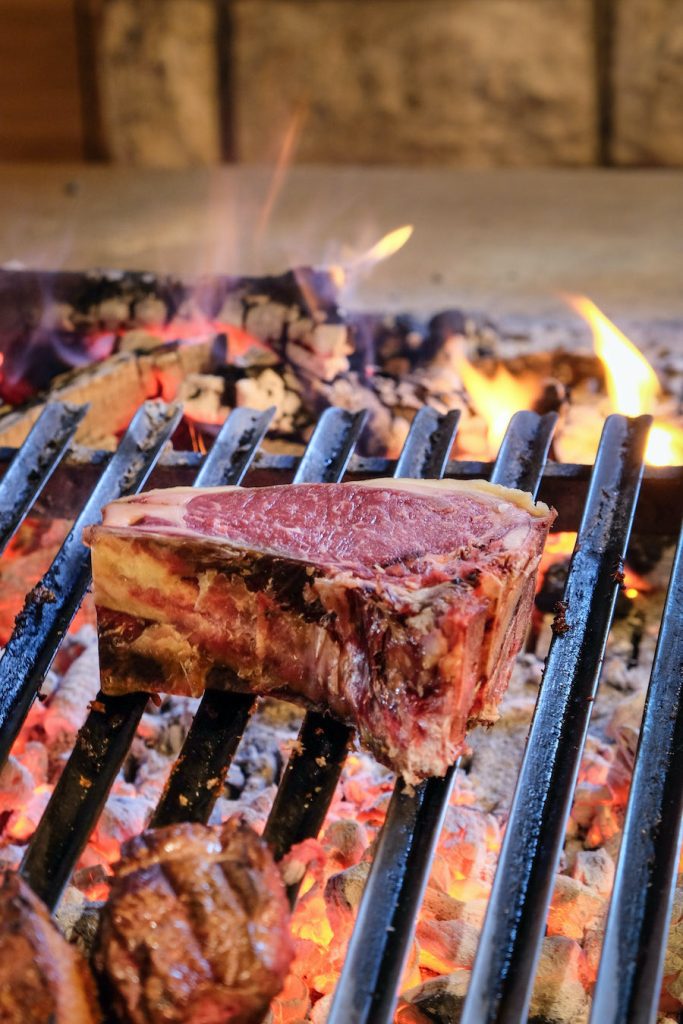
In winter, guests can reserve a table on the beautiful veranda overlooking the lands of the Rebuli family, who have run the restaurant since 1969. They delights guests with traditional local dishes and grilled meats still prepared using the same, top-secret recipe invented by grandfather Antonio.
Just one kilometer from the trattoria, you can stay at the Boutique Hotel Municipio 1815, which completes the Rebuli family’s hospitality offering. The former town’s old town hall, built in 1815 and used as the municipal seat for San Pietro di Barbozza, Santo Stefano, and Guia, has now been transformed into a beautiful hotel managed by event designer Anne Vendramini. It offers a magnificent panoramic terrace where an à la carte breakfast is served.
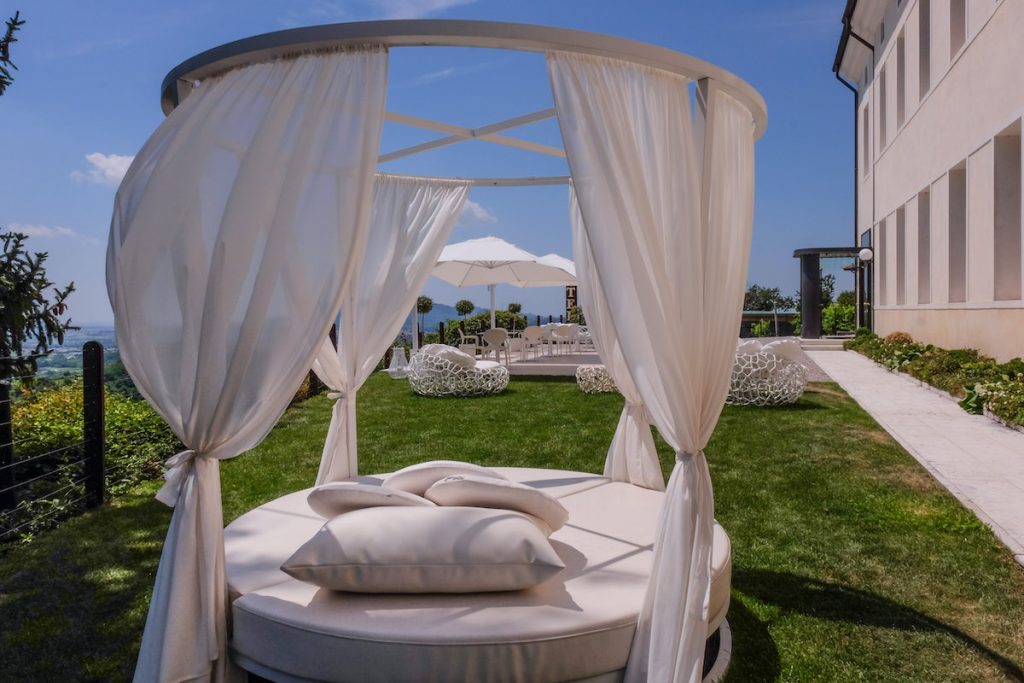
Continuing into the heart of Cartizze, the “grand cru” of Prosecco, we come across Salìs restaurant, named after the farmers’ special composition of the area’s soil, created by ancient marine uplift and thus rich in the precious minerals that give Cartizze wine its unique flavor.
In addition to the stunning view, Salìs offers the talent of chef Chiara Barisan, who offers traditional dishes revisited with creative flair and meticulous attention to seasonal ingredients.
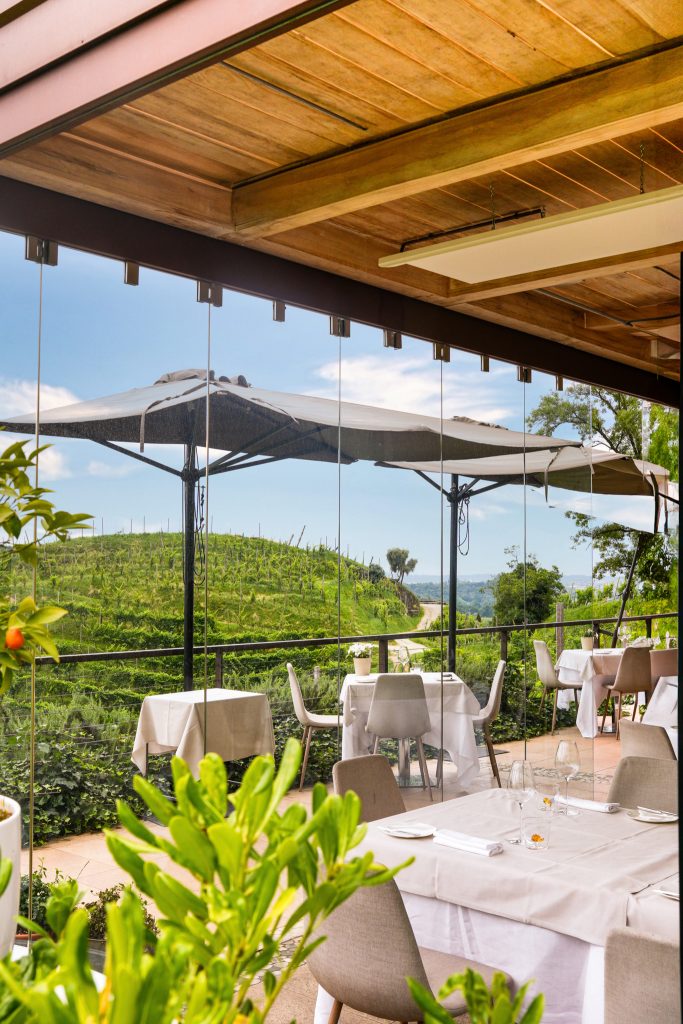
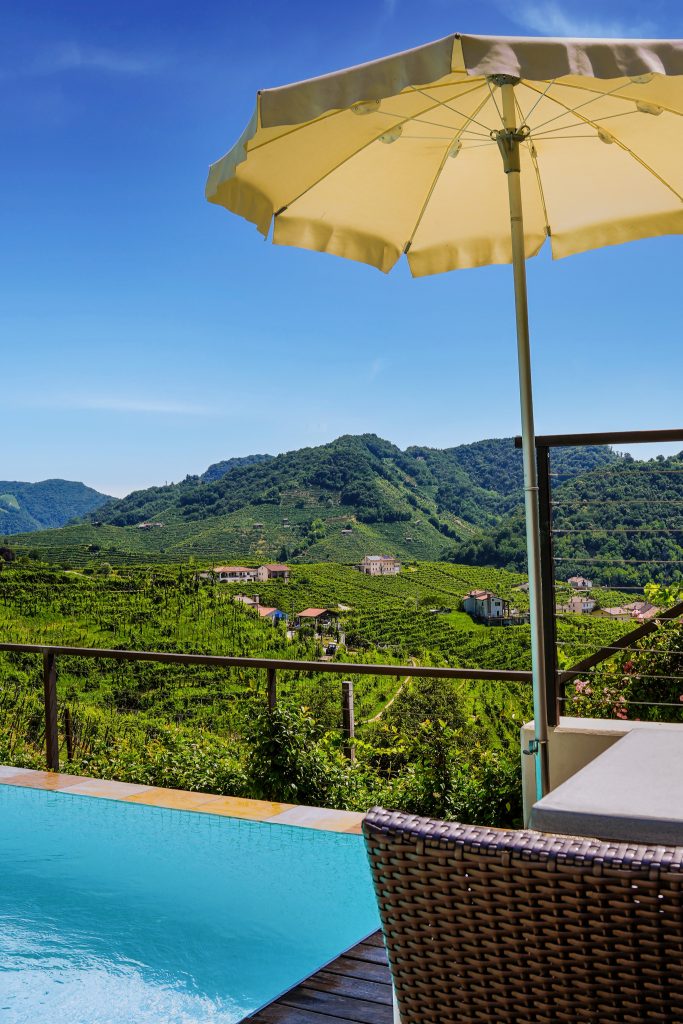
Another place to stay in Valdobbiadene in the spirit of tradition is Locanda Sandi, a wonderfully renovated farmhouse from the early 1900s. Here, you can experience the best of Venetian tradition by booking lunch on the charming veranda or pampering yourself in one of the delightfully country-chic rooms.
A few kilometers away, you can visit Villa Sandi, a majestic residence dating back to 1622 in Crocetta del Montello, now home to the eponymous winery. This estate houses one of the most beautiful and historic cellars in the Veneto region, whose core dates back to the early 18th century.
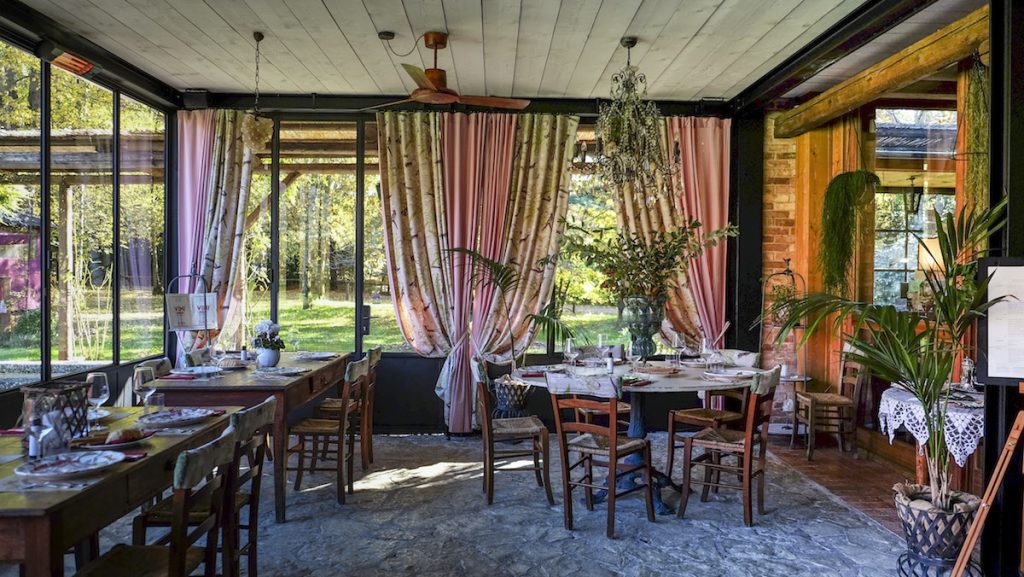
After extensive restoration work, Villa Sandi has been brought back to its former splendor by the Moretti Polegato family, who also reopened the network of secret tunnels leading to the Piave River, dug to serve as a direct link to the front during World War I.
Here, you can book a guided tour with wine tasting and visit the historic cellar, the various secret passages, and the rooms where Napoleon Bonaparte, Antonio Canova, the writers Caccianiga and Corso, and the painter Schiavoni stayed, testimony to a remarkable past.
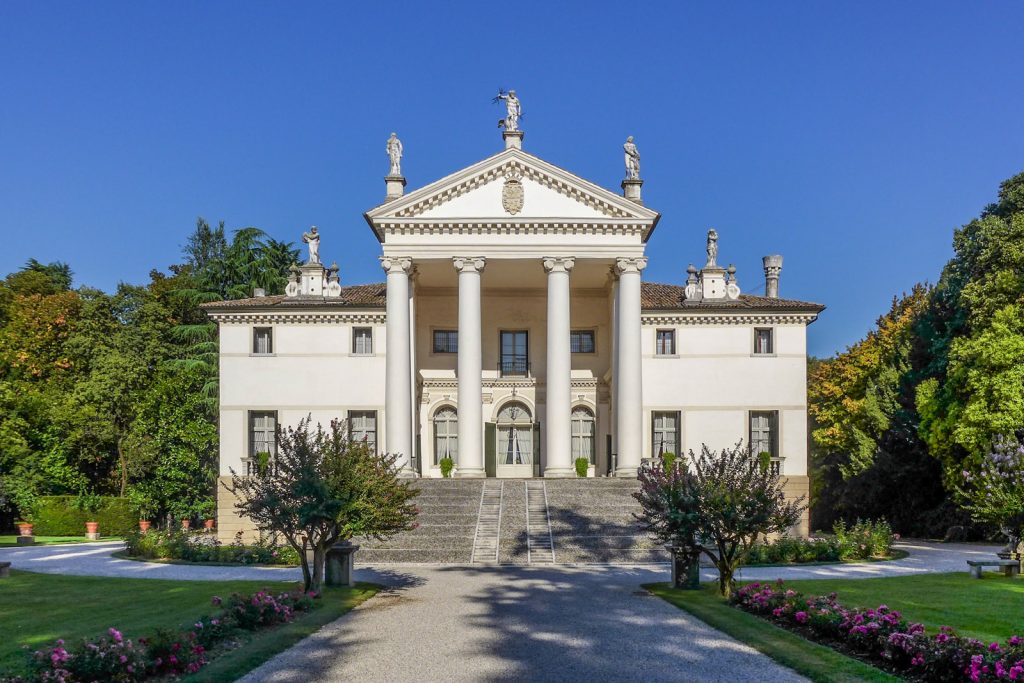
Another charming address is Villa Barberina in Valdobbiadene, a rare “clos” in the Prosecco Hills. It houses an elegant 18th-century villa, designed by the renowned interior architect Lorenzo Mongiardino, where Biedermeier style blends with refined artwork and a two-level swimming pool surrounded by vineyards.
The villa is now owned by the Franco family, owners of the Nino Franco winery. Founded in 1919 in Valdobbiadene, it is a global icon of Prosecco Superiore DOCG production, the first to make it a product of excellence, creating single-vineyard wines and introducing them to the world’s finest restaurants.
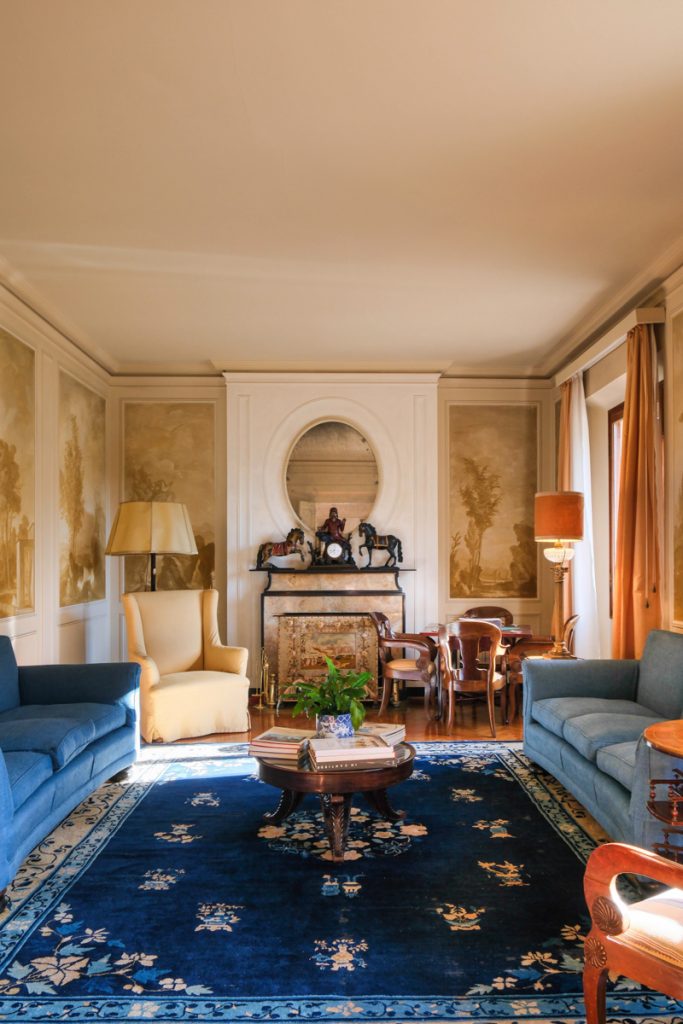
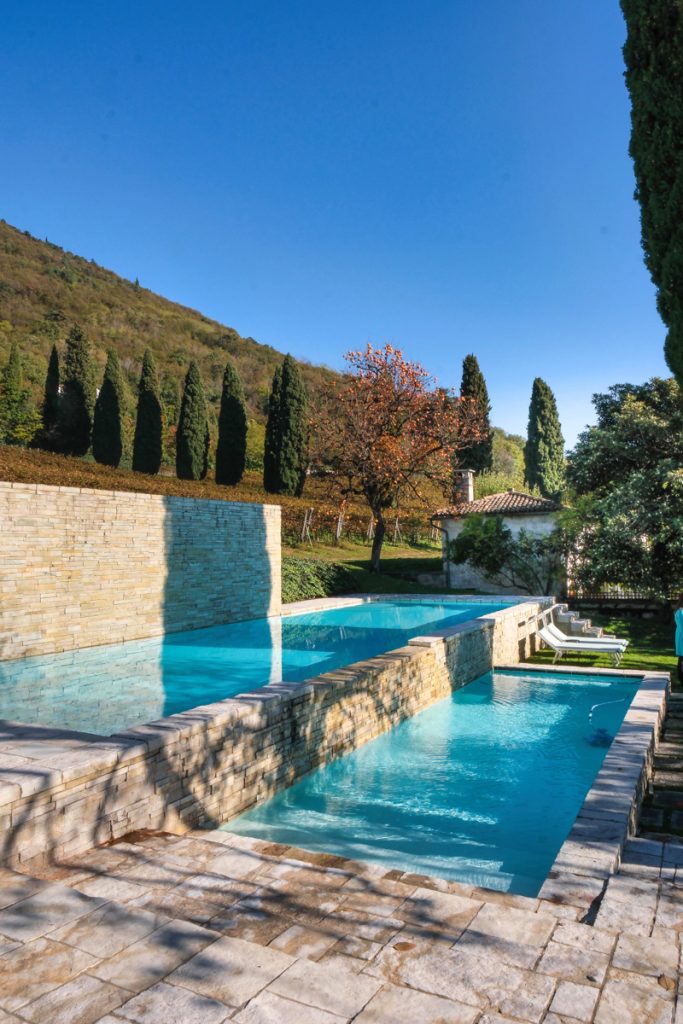
Just a short distance from Villa Barberina, you can book a tour and tasting at the winery, led by Primo Franco himself, his daughter Silvia, or one of their closest collaborators. This way, each guest can experience firsthand—and taste—the soul of their work, while being introduced to the history of the Prosecco Hills of Conegliano and Valdobbiadene.
